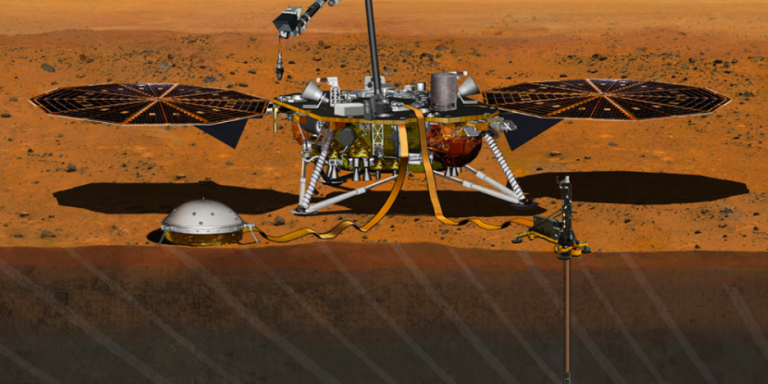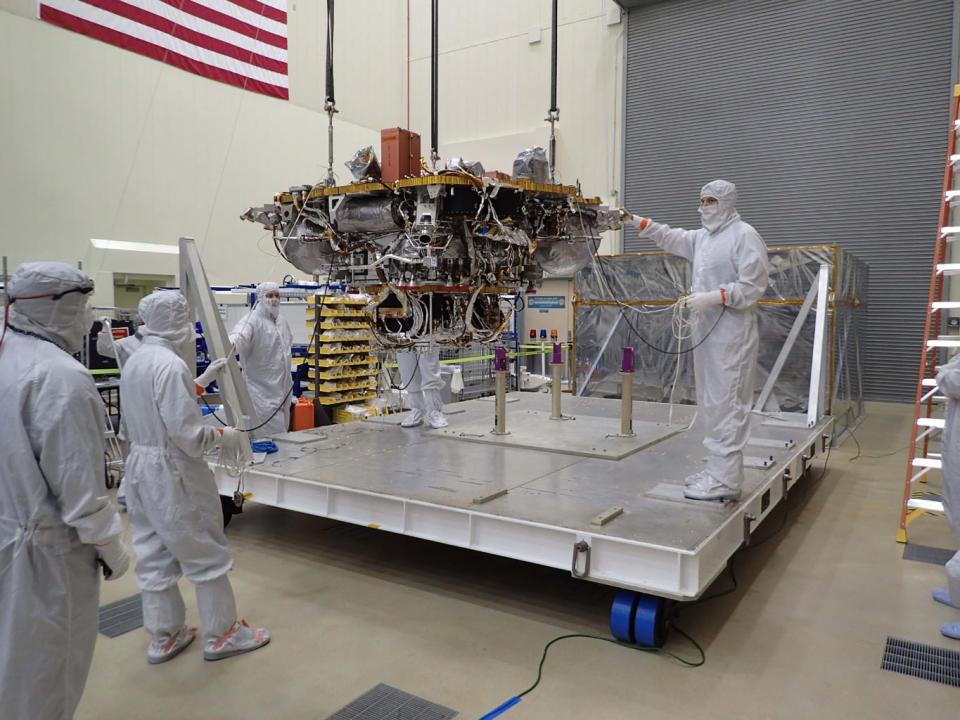Next Martian Lander Will Launch Next Year to Look Below the Red Planet's Surface

NASA's Jet Propulsion Laboratory (JPL) and Lockheed Martin have begun to ramp up work on the next Mars lander, InSight. It's scheduled to launch next year with a mission to study the deep interior of Mars.
"The first interplanetary launch in history from America's West Coast," InSight-an acronym for Interior Exploration using Seismic Investigations, Geodesy and Heat Transport-will launch in May 2018, from Vandenberg Air Force Base in central California if all goes as planned. Currently, though, InSight is being assembled and tested in Lockheed Martin's facilities near Denver, Colorado.
"Our team resumed system-level integration and test activities last month," says Stu Spath, spacecraft program manager at Lockheed Martin, in a statement. "The lander is completed and instruments have been integrated onto it so that we can complete the final spacecraft testing including acoustics, instrument deployments, and thermal balance tests."

The lander will be about 20 feet long, with two solar panels unfolding like paper fans to power it once it touches down on the Martian surface. InSight's robotic arm will then plant two instruments deep in the soil: a seismometer and a heat probe. The former will be be able to detect ground movements with such sensitivity that even a shake half the diameter of a hydrogen atom will register. The hope is that detection of "marsquakes," as the agency calls them, or meteor impacts, will provide data about the planet's interior.
It's hoped that the generally static nature of the Martian interior will provide a time machine of sorts to study the formation of planets. "Because the interior of Mars has churned much less than Earth's in the past three billion years, Mars likely preserves evidence about rocky planets' infancy better than our home planet does," says InSight Principal Investigator Bruce Banerdt of JPL.
The heat probe, which will come with a self-hammering mechanism, will send itself 10 feet down into the dirt to measure heat levels underneath the Martian surface.
InSight was originally slated to launch in May 2016, but a leak into a metal container meant to maintain near-vacuum conditions around the seismometer's main sensors delayed the mission. "We have fixed the problem we had two years ago, and we are eagerly preparing for launch," says InSight Project Manager Tom Hoffman of JPL. Scheduled to touch down on the Red Planet by the end of November 2018, InSight will work to make Mars that much less mysterious for the humans who will come after.
Source: NASA JPL
You Might Also Like

